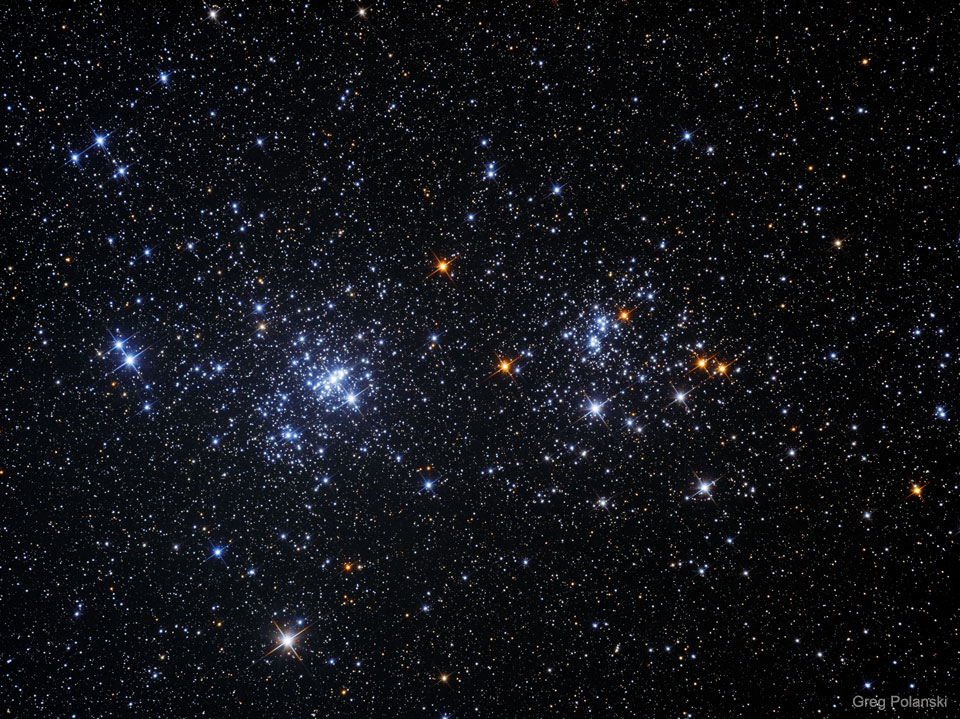2020年11月18日
A Double Star Cluster in Perseus
Image Credit & Copyright: Greg Polanski
Explanation: Most star clusters are singularly impressive. Open clusters NGC 869 and NGC 884, however, could be considered doubly impressive. Also known as “h and chi Persei”, this unusual double cluster, shown above, is bright enough to be seen from a dark location without even binoculars. Although their discovery surely predates recorded history, the Greek astronomer Hipparchus notably cataloged the double cluster. The clusters are over 7,000 light years distant toward the constellation of Perseus, but are separated by only hundreds of light years. In addition to being physically close together, the clusters’ ages based on their individual stars are similar – evidence that both clusters were likely a product of the same star-forming region.
Tomorrow’s picture: open space
英仙座双星团
影像提供与版权: Greg Polanski
说明: 如果大多数的星团令人印象深刻的话,那么疏散星团NGC 869与NGC 884,则会让人印象加倍深刻。在上面影像里,这对亦名为英仙座h与chi的不寻常双星团,极为明亮,在幽暗的地点,无需借助双筒望远镜,用肉眼就能看到它。虽然双星团的发现常归功于希腊天文学家伊巴谷,不过,它们肯定是在信史之前即广为周知。这个双星团位在北天的英仙座方向,约7,000光年远之处,两者的间距则只有数百光年。这对星团除了紧密相邻之外,也拥有类似的恒星,故可佐证它们很可能是诞生在同个恒星形成区。
明日的图片: open space







